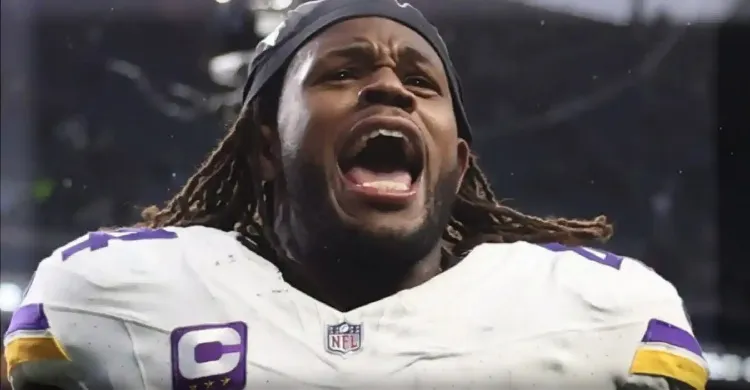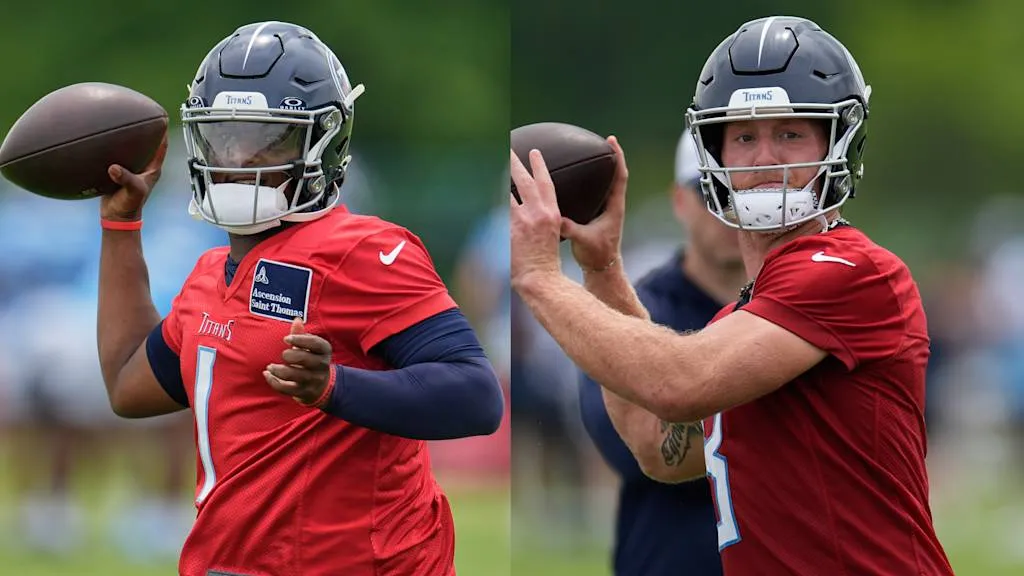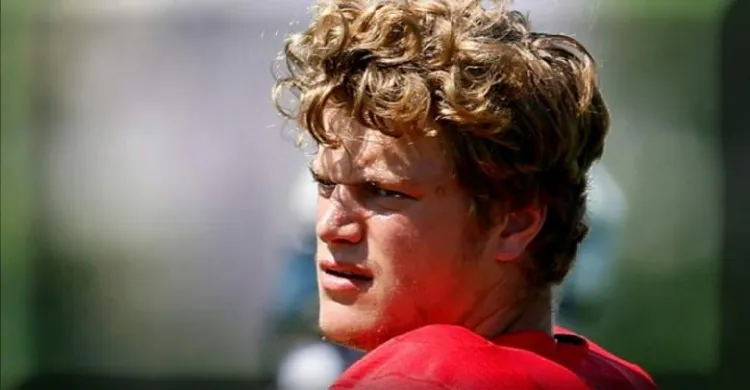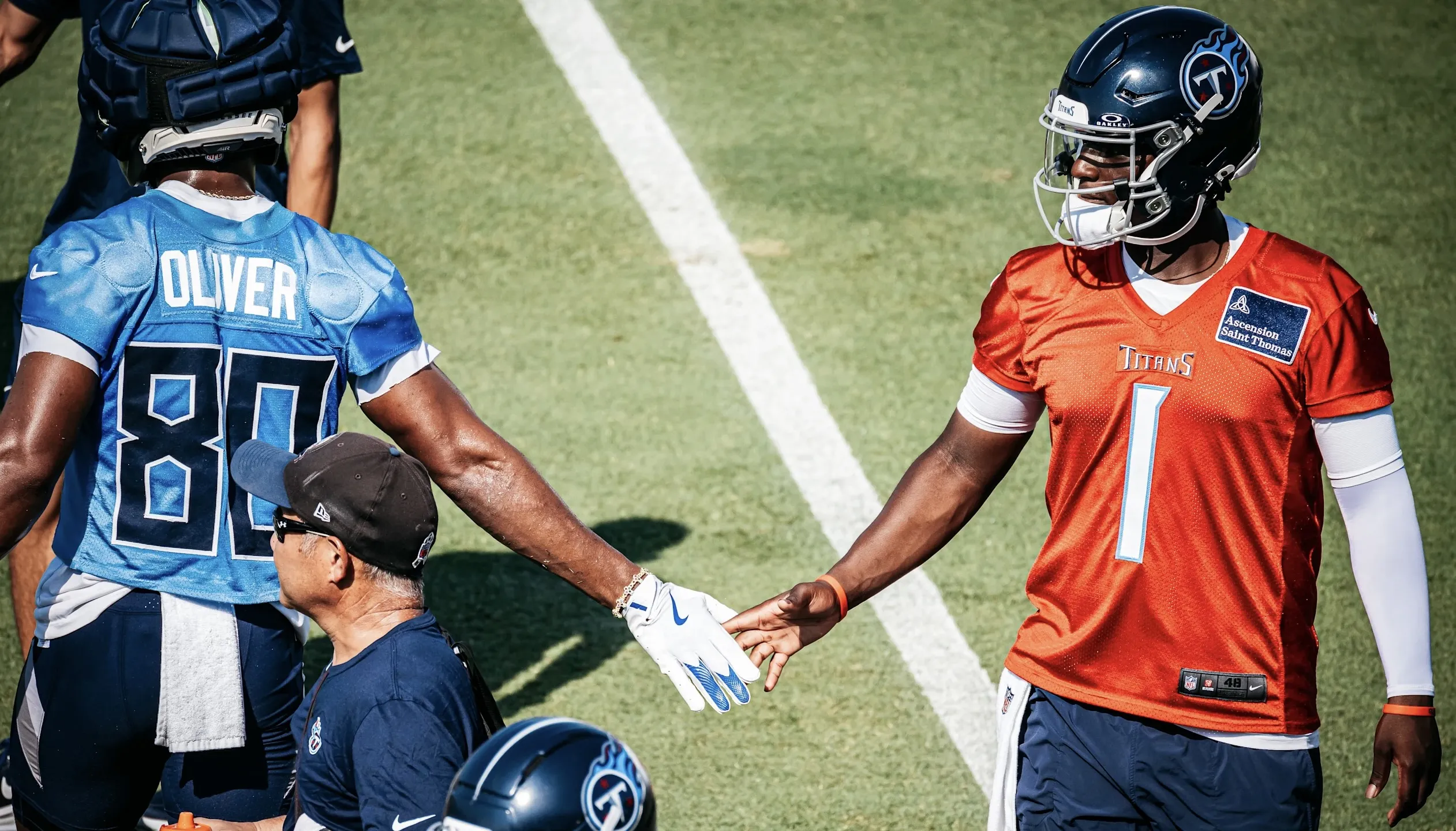The Detroit Lions are among the many NFL teams that are using advanced technology to help their players acclimate to their scheme and to get ready for game day.

During a recent media session, veteran cornerback Rock Ya-Sin told reporters the "VR room" was part of the reason for his early camp success.
Detroit has a spacious room in its team facility used specifically for immersive film study. While there's plenty of value in simply consuming hours of film on one's iPad, the Lions have an alternative solution that makes their players feel as though they're actually on the field.
Players don't wear the typical headsets that accompany virtual reality setups, rather they are able to stand in front of a projector and feel as though they're in the game. Film cut-ups are projected onto the walls by connecting to a player's iPad, and the floor is turf to add to the game-like feel.
Several players discussed the impact of what they call the virtual reality room, as well as how using it helps their respective position groups in their preparation. As a result, they can acclimate to the team's scheme quickly, make calls and analyze blitz pick-ups in an effort to better prepare for games.
Virtual reality is taking the NFL by storm, as teams across the league are maximizing the benefits it can have for position groups and individual players. The Lions have been doing so for several years, albeit in a different way.
Former Lions coach Matt Patricia first brought the advanced player development strategy to Detroit. The Patriots were among the early teams using virtual reality to help their players develop.
Closest thing to on-field action
Two positions groups that use the room predominantly are the offensive line and the secondary, with each gaining different elements of knowledge from it.
As veteran Taylor Decker told Lions OnSI, the offensive line uses the room for blitz pick-up and protection meetings. Stepping into the room, the group can make calls and checks in an effort to prepare for what they'll see from opponents.
For instance, when the regular season opener grows closer, Decker and the starting offensive line will likely be set up in formation in front of the big screens, analyzing what the Green Bay Packers' defensive line could be doing in any given situation.
“Once we’re in season, we’ll use it for blitz pickup and pressure pickup, but not currently," Decker said. "I don’t use the goggles, we just put up a big-TV picture of a defense to where we can line up and see what’s going on. It’s cool. I don’t think it’s a replacement for watching a lot of film on your iPad, but it’s a good tool when you can get the whole offense in there. Most of the time, it’s O-line, quarterbacks and running backs and we’ll go over some protection stuff.”
Third-year offensive lineman Colby Sorsdal estimated the room is between 32-40 feet long, and emphasized how important the visualization that the room provides is for the team's preparation.
While it doesn't directly replicate having to make decisions in the moment on the field, it's as close as the players will get off the field to being in those situations.
“It feels like you’re there. So, you can see it," Sorsdal said. "There’s nothing like seeing it out on the field, and that’s the closest you can get to it. We watch hours and hours of film, and that’s one thing, but to visualize it from your position, it’s another. And it kind of gets you seeing things faster, dissecting the blitz or pressure faster.”
David Shaw was a visionary
NFL teams began incorporating VR a decade ago, beginning in 2015. Start up companies like STRIVR began developing technologies to enhance player performance, especially at the quarterback position.
David Shaw, who coached collegiately at Stanford, began incorporating the use of advanced technology and virtual reality back in 2014. It was gradual use at first, but by the end of the season, the talented offensive coach was fully bought in.
He saw the immediate results out on the field.
"There's no stopping this," Shaw said a decade ago. "We know that. It won't be too long until it's all over the place."
Accelerated scheme understanding
While the room is designed for group use, with the offensive line and running backs benefitting from simulating protections, there is plenty of value in individual usage.
The defensive backfield also gets plenty of usage out of the room, particularly a pair of cornerbacks who are relatively new to the organization: Ya-Sin and Amik Robertson.
Last season, after signing with the Lions in free agency, Robertson got to work in the virtual reality room with defensive quality control coach Dre Thompson, and put himself right in the middle of the action, learning both boundary corner and nickel in the process.
Not only was he able to simulate rotations and coverages, but also he was able to identify where his run gaps were.
“That was a room that I was in, learning both nickel and corner," Robertson said. "Nickel, learning the run fits, whatever. Just getting with my coaches, with Dre (Thompson), being able to get in there and get a better view of it, put yourself in the moment. It just helps you when you’re out there, it feels like you already saw it.”
This year, Ya-Sin is a newcomer looking to do the same thing Robertson did a year ago.
He made first mention of the virtual reality room unprompted, indicating how valuable it has been to him getting acclimated to Detroit's defense.
“I feel like it definitely allows me to get reps, as if I'm in a walkthrough or even putting myself in a game without actually doing it," Ya-Sin said. "The screen's so big, you feel like you're on the field, you're able to make adjustments live because the film is going live, you can make the calls and make the adjustments. It helps you be able to recognize formations and get practice doing it without actually being out here on the grass."
Ya-Sin said his previous team, the San Francisco 49ers, may have utilized it with their quarterbacks, but not in the same way the Lions are. He noted that the room allows players to get right into the action, and quickly get accustomed to what they'll see on Sundays.
"I don't know, I believe the quarterbacks probably had it, but I don't know if the DBs were using that in San Fran. I don't know how to describe it — virtual reality, it feels like you're there," Ya-Sin explained. "If you were to use it, you would feel like you're Kerby Joseph, like you're Brian Branch."
Benefits for young players
Across the league, many teams are learning and utilizing the benefits of virtual reality technology. Jayden Daniels has been at the forefront of it, and credited the technology for his development into a Heisman Trophy winner at LSU and Rookie of the Year with Washington last year.
Other notable examples include the Minnesota Vikings giving 2024 first-round pick J.J. McCarthy virtual reality reps while he rehabbed a knee injury last year and Tennessee Titans No. 1 overall pick Cam Ward following in Daniels' footsteps.
According to the Sports Science Agency, Daniels' virtual reality simulator operates at 1.75x speed, which makes him process things faster in an effort to do so slower during games. This is just one of the ways that teams are utilizing what is becoming very popular technology.
Last season, Detroit's first-round pick Terrion Arnold was another example of a young player trying to use VR to gain an advantage. He views the Lions' setup as a great way to bank extra reps and prepare for all sorts of looks that they could see from different opponents.
Like Daniels, the Lions also have an option to speed up or slow down the projector, which can be an asset to make players process things faster in a practice setting.
"You just go in there, we've had it for like two years. Just go in there and you're able to simulate plays and then go in there and put yourself in real game scenarios," Arnold said. "It really helps a lot, just as far as, you can go in there by yourself and just craft. If you aren't taking reps in practice or you want extra reps and you're a visual learner, you can see it. You can speed it up, you can slow it down, you can get little tips and little keys. It's very beneficial. It's like playing a video game, but it's actually your job."
Ultimately, the Lions have found a unique way to try to gain an edge, and it's one that the players seem grateful for. There are several different ways the team utilizes it, but it's all centered around best executing their respective responsibilities before it's time to do so on Sunday.
“You feel like you’re on the field because it’s so big, you can see the linemen, and it helps you know what gap you have," Robertson said. "Playing nickel, playing corner, knowing where you fit at. It just helps the game slow down, so when you’re out there, it’s basically like you already saw it because you’re in that green room being able to see the same thing.”



